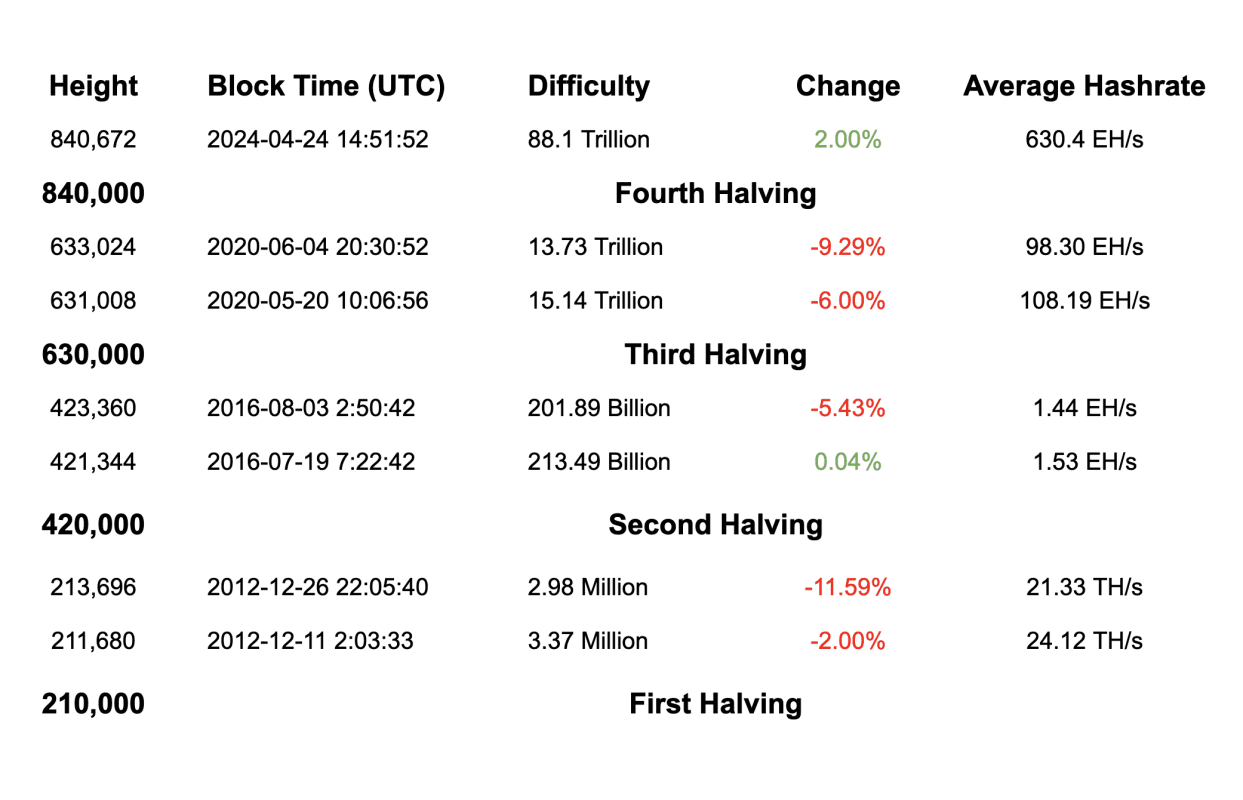Bitcoin Difficulty Never Went Up Right After Halving – Until Now

Bitcoin’s mining difficulty has posted a notable increase right after a halving event for the first time ever.
The network’s mining competitiveness jumped up by 2% at block height 840,672 on Wednesday, the first adjustment since the fourth bitcoin halving on April 20.
Intuitively, bitcoin’s halving means the reduction of block subsidies and hence would cause the mining profitability to decline sharply to a point where some miner operators would unplug their equipment.
For instance, bitcoin’s mining difficulty went down two times in a row right after the first and third halving events in 2012 and 2020, respectively. While the difficulty after the second halving remained flat with a negligible increase of 0.04%, the following adjustment saw a sharper decline of 5.43%.
However, bitcoin’s seven-day average hashrate has steadily climbed up before the fourth halving. It dropped from a peak of 655 EH/s to 621 EH/s over the three days after halving but has bounced back since then to 640 EH/s.
As previously reported, bitcoin’s hashprice soared to two-year highs in an unprecedented move after the fourth halving thanks to surging transaction fees elevated by token creation activities on the Rune Protocol.
While transaction fees have come down significantly over the past few days, they still make up about 45% of the block rewards in the past 24 hours.
Bitcoin’s hashprice has had a wide swing since Saturday, reaching $180/PH/s before plunging to $75/PH/s and then bouncing back to $92/PH/s, which is only about 10% off from its pre-halving levels.

